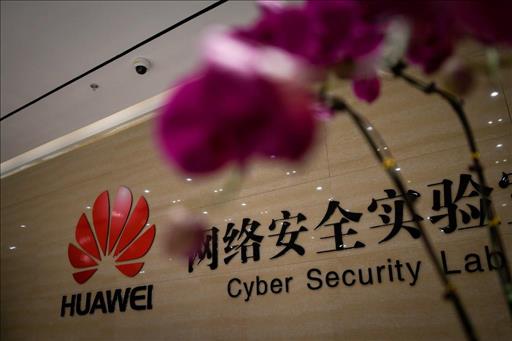Bertrand Venard
(MENAFN - The Conversation) As President Xi Jinping celebrated the 70th anniversary of the People's Republic of China with amassive military parade , the United States president threatened to raisetaxes on Chinese products .
In the meantime, belligerent cyber activity is ramping up, mirroring the trade war between China and the United States. Could this multiply and bring about our worst fear – a conventional war? Every day, statements from US and Chinese leaders highlight just how far apart these two countries are ideologically and politically, and the extent of their economic and military rivalry.
History has taught us how this type of confrontation often ends. Speaking of the rivalry between Sparta and Athens, theAthenian historian Thucydidespredicted that a dominant nation, seeing its supremacy seemingly threatened by a rising power, would settle the question by war. Thucydides' escalation theory makes us fear the worst for the US-China cold war, a war currently being fought in cyberspace.
From Estonia to Stuxnet
TheRussian cyberspace attack on Estonia in 2007was a wake-up call to all developed states. Russian hackers, using a simpledenial-of-service attack , were able to cripple the Baltic state for several days. The functioning of its government, ministries, banks, hospitals, telecommunications companies and media were effectively paralysed.
Before and after, techniques such as unit attacks (to extract information) or the use of vulnerabilities (to penetrate networks and computers) have been used on a smaller scale, but in highly effective ways. For instance, the United States and Israel developedOperation Stuxnetto slow down the Iranian nuclear programme by remotely damaging uranium-enrichment centrifuges through a complex attack involving, inter alia, a computer virus.
'The secret history of the Stuxnet' (Recode Media, Alex Gibney).
New cyberwar doctrines
Aware of the growing potential of cyberattacks, as witnessed by the Estonian incident, the United States and China have been steadily formulating theircyberwar strategies , and developing the organisations, procedures and weapons to deliver them.
The Obama administration's cyber strategy was primarily defensive. Under Donald Trump, the strategy, has becomemore pro-active , in line with his supremacist vision. The shift in tone between the military and cyber strategies under the Obama and Trump administrations mirrors the rise in tensions between the US and China. This cyberwarfare, or Cold War 2.0, is based on the development of technical and human resources, intelligence gathering, sabotage and influence operations.
The resources deployed for cyber warfare have been increasing on both sides. The home of giant digital companies and with theworld's biggest military budget , the US undeniably has great cyber firepower. In 2009, the federal government created a new military command centre, theUS Cyber Command(operational since 2010), which now employs more than6,000 experts .
China's 'Strategic Support Force'
On its side, China can count on theThird Department of the People's Army , the specialised internal cyber-security forces, and several technology companies. In 2015, Beijing created a counterpart to the US Cyber Command Centre,the Strategic Support Force , which brings together the resources of the People's Army in the field of cyber, space and electronic warfare.
Cases of espionage between the two countries have multiplied as, for example, thetheft of the plans of the US F-35 military aircraft , which miraculously turned into the Shenyang FC-31, afterChinese spies allegedly stole the US plans . The Cold War 2.0 also targets economic interests. In 2012, former FBI director Robert Mueller commented that there are only two types of companies:those that have been hacked and those that will be .
Since then,more than 80% of economic espionage casesagainst the United States have been linked to China. For example, hackers linked to the Chinese Ministry of State Security, hacked the Marriott Group over a period of four years, in the process stealing the personal data of some500 millions of their customers .
Operation 'Aurora' decrypted on CNNet.
Sabotage and influence
Physical sabotage is also part of the cyberwar. In 2017, using their digital arsenal, the US managedto defeat the attempted fire of North-Korean missiles, loyal allies of China .
According to the Cartwright doctrine (after US General James Cartwright), to be effective, a cyber-strategy must have an operational component backed up, in some instances, by messages towarn adversaries of incurred risks and reveal enemy threats .
Influence and destabilisation are important objectives of the Cold War 2.0. During the 2009-2010'Aurora' cyberattack , China allegedly targeted 34 American companies, undermining flagship US companies such as Northrop Grumman, Dow Chemical and Google. Will the next step be aChinese digital propaganda actionin the US presidential election or other allied democracies? China has already shown its capacity for hacking accounts or spreading misinformation in the media duringrecent unrest in Hong Kong .
The Cold War 2.0 is a kind of guerrilla warfare characterized by continued digital skirmishing between the United States and China, together with a threatening proliferation of intelligence-gathering activities, sabotage and influence. Given that both are have nuclear weapons, it is now paramount that these two countries avoid Thucydides' escalation trap.
This article was originally published inFrench

No comments:
Post a Comment